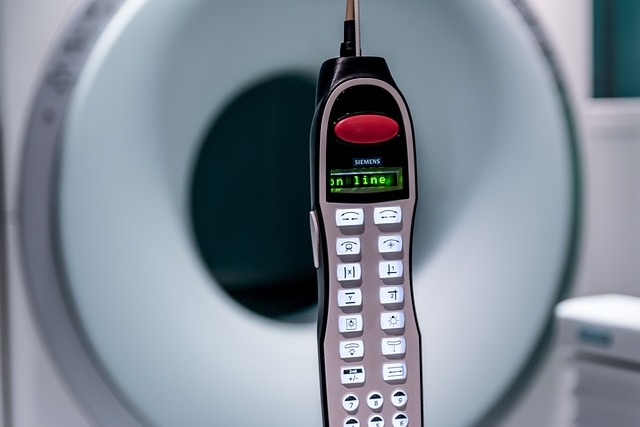Chest X-rays and bronchial imaging are essential tools for diagnosing lung conditions, offering non-invasive insights into airways, lungs, heart, and bones. Radiologists use varying tissue absorption rates to identify abnormalities like pneumonia, tumors, and COPD, enabling early detection and treatment planning. Bronchial imaging specifically visualizes airways, aiding in differentiating benign from malignant conditions and managing respiratory ailments effectively.
A chest X-ray is a fundamental tool in lung and chest imaging, offering a non-invasive glimpse into our internal anatomy. This basic guide delves into the world of chest radiography, exploring its role in diagnosing various conditions. We’ll uncover how X-rays visualize lung diseases and abnormalities, with a focus on bronchial imaging. By understanding common findings, medical professionals can interpret these images accurately, making chest X-ray an essential first step in patient diagnosis.
Understanding Chest X-rays: A Basic Guide
Chest X-rays are a fundamental tool in diagnosing and evaluating lung and chest conditions, providing valuable insights into internal structures. This non-invasive imaging technique uses low-energy X-radiation to create detailed black-and-white images of the lungs, heart, bones, and surrounding structures within the chest cavity. By examining these images, healthcare professionals can identify abnormalities such as pneumonia, tumors, or fluid buildup in the pleural space.
Understanding Chest X-rays involves grasping how they work. When X-rays pass through the body, different tissues absorb them at varying rates. Air, for instance, appears black on the image, while bones appear white due to their density. Soft tissues like muscles and organs have varying degrees of transparency, allowing radiologists to assess their structure and identify potential issues in bronchial imaging or lung parenchyma. This basic guide highlights the significance of Chest X-rays as a preliminary step in comprehending chest-related health concerns.
The Role of Bronchial Imaging in Diagnosis
Bronchial imaging plays a pivotal role in diagnosing lung and chest-related conditions. This advanced technique allows healthcare professionals to visualize the airways, known as bronchi, and assess their structure and function. By examining the bronchial tree, doctors can detect abnormalities such as narrowing, inflammation, or infections that may be indicative of various respiratory ailments.
In many cases, bronchial imaging is crucial for differentiating between benign and malignant conditions affecting the lungs and airways. It helps identify tumors, growths, or blockages, enabling early detection and subsequent treatment planning. Moreover, this non-invasive procedure provides valuable insights into chronic obstructive pulmonary disease (COPD), asthma, and other inflammatory conditions, guiding personalized management strategies for improved patient outcomes.
How X-rays Visualize Lung Conditions
X-rays provide a non-invasive method to visualize lung conditions, offering a quick glimpse into the internal structures of the chest. When a patient undergoes a chest X-ray, high-energy photons pass through the body, interacting with various tissues differently based on their density. The lungs, with their air-filled sacs (alveoli), appear darker than the surrounding tissues, allowing radiologists to identify abnormalities like consolidations, effusions, or enlarged lymph nodes.
This imaging technique is particularly valuable for bronchial imaging, as it can detect narrowing or obstruction of the airways. By capturing detailed images of the lungs and associated structures, chest X-rays play a crucial role in diagnosing and monitoring various respiratory conditions, providing essential information to guide treatment decisions.
Common Findings and Their Interpretations
Common findings on chest X-rays can provide valuable insights into lung and chest conditions, offering a non-invasive look at internal structures. One of the primary areas of interest is the bronchial system, visible through imaging of the airways. Enlarged bronchi or bronchioles suggest potential inflammation or infection, while reduced lucency (opacities) may indicate consolidations or pneumonia. These abnormalities in bronchial imaging can be indicative of a range of issues, from mild respiratory infections to more severe conditions like chronic obstructive pulmonary disease (COPD).
Interpretation also considers the presence and distribution of pleural effusions, where fluid accumulates between lung tissue and the chest wall. This finding could point to underlying diseases or conditions such as heart failure or pneumonia. Additionally, calcifications in the lungs, visible as white spots, often suggest old tuberculosis infections. These common findings serve as a starting point for further diagnosis and help radiologists assess overall lung health and detect potential pathologies early on.
Chest X-rays serve as a fundamental tool for initial assessment and diagnosis in lung and chest imaging. By utilizing ionizing radiation, these images provide critical insights into various conditions affecting the lungs and bronchial structures. From understanding basic techniques to interpreting complex findings, this guide highlights the significance of Chest X-rays and their role in facilitating accurate diagnoses through bronchial imaging.
